Comments / Questions (28)
![]() Lindy wrote:
Lindy wrote:
Could I please have help with how to decrease on the neck edge of the vest. Thank you!
24.01.2025 - 21:37DROPS Design answered:
Dear Lindy, please see our answers below. Happy knitting!
25.01.2025 - 18:56
![]() Hilke Flege wrote:
Hilke Flege wrote:
Vielen Dank
24.01.2025 - 09:26
![]() Lindy wrote:
Lindy wrote:
I am looking at the photo of the Vest and the neck looks round, not V neck?
23.01.2025 - 16:02DROPS Design answered:
Dear Lindy, that is correct, it's a round neck. You can see this in the tags under the materials section; the neck is tagged as a "round neck". There seems to be a typo in the US version that indicated that it's a V-neck; we will correct it as soon as possible. Happy knitting!
25.01.2025 - 18:55
![]() Lindy wrote:
Lindy wrote:
I am on the right shoulder, decreasing for the V-neck at the beginning of the row. How do I do the decrease as there are no band stitches on the V-neck. Am I missing an instructions please?
22.01.2025 - 23:09DROPS Design answered:
Dear Lindy, this is a round neck; the decreases are worked in the edge stitch by the neck. Happy knitting!
25.01.2025 - 18:55
![]() Sylvie wrote:
Sylvie wrote:
Bonjour, La légende A1 : 14 mailles 2 mailles envers sur endroit faire 1 jeté entre 2 mailles je comprends pas . Est ce que je les tricote si je rajoute 1 jeté je rajoute 1 maille. Désolé je reprends le tricot. Merci pour vos explications
21.01.2025 - 12:18DROPS Design answered:
Bonjour Sylvie, tricotez le 1er rang de A.1 ainsi sur 14 mailles en augmentant en même temps 5 mailles (= jetés); 2 m env, 1 jeté, 2 m end, 1 jeté, 2 m env, 1 m end, 1 jeté, 1 m end, 2 m env, 1 jeté, 2 m end, 1 jeté, 2 m env. Au rang suivant = sur l'envers, tricotez: 2 m end, 15 m envers (tricotez les jetés torse pour éviter des trous), 2 m end. Bon tricot!
21.01.2025 - 16:49
![]() Sylvie CROUZET wrote:
Sylvie CROUZET wrote:
Bonjour J ai fait les 5 cm de côté après je suis coincée. Je comprends pas. Est ce que c est possible d avoir une vidéo
21.01.2025 - 11:15DROPS Design answered:
Bonjour Mme Crouzet, après les côtes, vous allez tricoter le premier rang en jersey/point fantaisie ainsi: 7 mailles point mousse, 34-38-42 m (cf taille) jersey en diminuant 5-6-7 m (= il reste ainsi 29-32-35 m jersey), tricotez ensuite le diagramme A.1 (= 14 mailles + 5 m augmentées dans A.1 = 19 m), tricotez ensuite les 34-38-42 m suivantes en jersey (cf taille) jersey en diminuant 5-6-7 m (= il reste ainsi 29-32-35 m jersey), terminez par 5 m point mousse, vous avez 91-97-103 m sur l'aiguille. Bon tricot!
21.01.2025 - 16:42
![]() Siguoirt wrote:
Siguoirt wrote:
Apres diminutions emmanchures il me reste 101 mailles et pas 85 Pourquoi?
15.01.2025 - 08:25DROPS Design answered:
Bonjour Mme Siguoirt, pour la 4ème taille, on a 111 mailles puis on rabat 8 m de chaque côté = il reste 95 mailles, puis on va diminuer 5 fois 1 maille de chaque côté tous les 4 rangs = il reste 85 mailles. Bon tricot!
15.01.2025 - 09:21
![]() Lindy wrote:
Lindy wrote:
Reached the armhole section. Do I decrease at both ends of the row? Or at the beginning of the row and then at the beginning of the next row. I'm also confused by: decrease every 4th row (I'm making a S) - 1 stitch 2 times each side. So would that be k2 tog, k2 tog, after and before the garter stitches? I hope I'm explaining myself OK.
09.01.2025 - 20:33DROPS Design answered:
Dear Lindy, work 3 rows after the first bind off row (= 1 row binding off 7 sts from RS, 1 row binding off 7 sts from WS, 1 row from RS, 1 row from WS) and now decrease 1 stitch at the beginning + 1 stitch at the end of next row from RS. See also previous answer. Happy knitting!
10.01.2025 - 08:33
![]() Lindy wrote:
Lindy wrote:
Reached the armhole section. Do I decrease at both ends of the row? Or at the beginning of the row and then at the beginning of the next row. I'm also confused by: decrease every 4th row (I'm making a S) - 1 stitch 2 times each side. So would that be k2 tog, k2 tog, after and before the garter stitches? I hope I'm explaining myself OK.
09.01.2025 - 20:27DROPS Design answered:
Dear Lindy, decreases for armholes are worked on each side, ie towards both armholes, decrease as explained under DECREASE TIP (for armholes and neckline): at the beginning of the pattern; this means you will decrease 2 sts on each row. Happy knitting!
10.01.2025 - 08:30
![]() Heike wrote:
Heike wrote:
Hallo, sind die Reihen bei dem Diagramm A1 und A2 nur Hinreihen? Ist also der erste Zopf in der dritten oder in der fünften Reihe. Freue mich über eine schnelle Antwort.
08.12.2024 - 22:33DROPS Design answered:
Liebe Heike, alle Reihen sind gezeichnet, so wird der 1. Zopf bei der 3. Reihe A.2 gestrickt. Viel Spaß beim Stricken!
09.12.2024 - 09:23
Snowfall Vest#snowfallvest |
||||||||||||||||
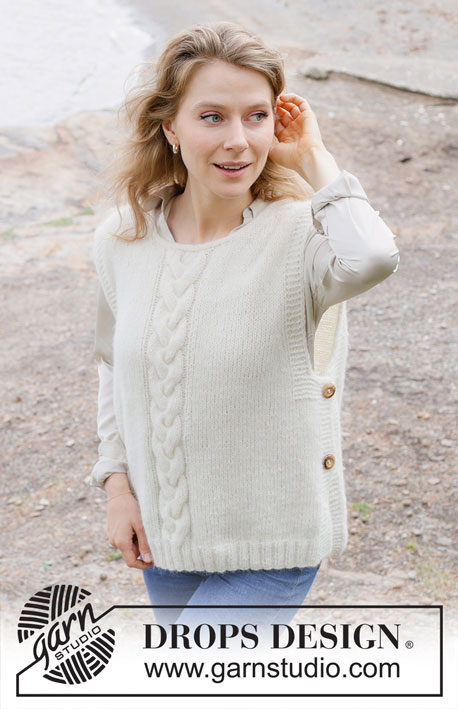 |
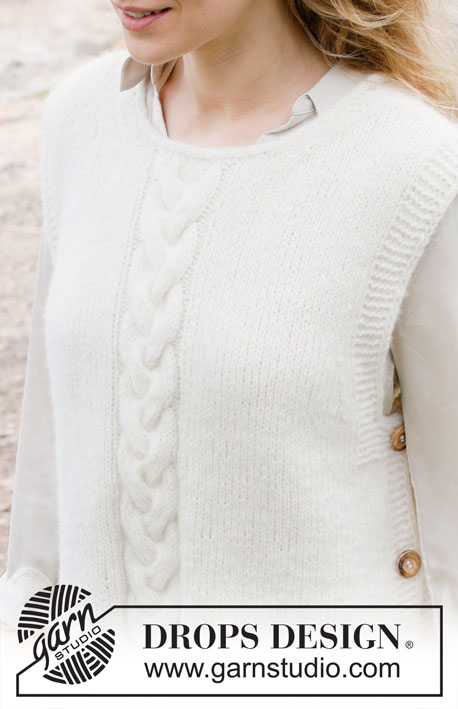 |
|||||||||||||||
Knitted vest in DROPS Air. The piece is worked bottom up with cables, diagonal shoulders and split in sides. Sizes XS - XXL.
DROPS 252-31 |
||||||||||||||||
|
------------------------------------------------------- EXPLANATIONS FOR THE PATTERN: ------------------------------------------------------- GARTER STITCH (worked back and forth): Knit all rows, from both the right and wrong side. 1 ridge in height = knit 2 rows. BANDS WITH I-CORD: START OF ROW: Work the band as follows: Slip 1 stitch purl-wise, with yarn in front, knit 1, work 5 garter stitches. END OF ROW: Work the band as follows: Work until there are 7 stitches left on the row, work 5 garter stitches, slip 1 stitch purl-wise with yarn in front, knit 1. Work like this from both the right and wrong side. DECREASE TIP (for armholes and neckline): All decreases are worked from the right side! START OF ROW: Work the first 9 stitches as before, slip 1 stitch knit-wise, knit 1 and pass the slipped stitch over the knitted stitch (= 1 stitch decreased). END OF ROW: Work until there are 11 stitches left on the row, knit 2 together (= 1 stitch decreased), work to end of row as before. I-CORD CAST OFF: At the end of the round when the last stitch has been knitted up: Cast on 3 stitches from the right side. Slip these 3 cast-on stitches back onto the left needle with the working strand 3 stitches in on the left needle (when worked, the strand tightens to form a small tube). ROW 1 (right side): Knit 2, knit 2 twisted together. Slip the 3 stitches on the right needle back onto the left needle. Do not turn. Repeat ROW 1 until there are 3 stitches left on the right needle. Slip these 3 stitches back onto the left needle. Cast off. Sew a small stitch to join the beginning and end of the I-cord together. ------------------------------------------------------- START THE PIECE HERE: ------------------------------------------------------- VEST - SHORT OVERVIEW OF THE PIECE: The piece is worked back and forth with circular needle, bottom up. The front and back pieces are worked separately, sewn together at the shoulders and decorative buttons are sewn onto each side. FRONT PIECE: Cast on 96-104-112-120-136-144 stitches with circular needle size 4 mm and DROPS Air. Work rib from the wrong side as follows: 7 stitches according to BANDS WITH I-CORD, work rib (purl 2, knit 2) until there are 9 stitches left, purl 2 and 7 stitches according to BANDS WITH I-CORD. Work this rib back and forth for 5-5-5-6-6-6 cm. Change to circular needle size 5 mm. Work 1 row of stocking stitch with 7 band-stitches on each side. AT THE SAME TIME decrease 5-6-7-7-9-9 stitches evenly over the next 34-38-42-46-54-58 stitches, work diagram A.1 across the next 14 stitches (5 stitches increased in A.1), work stocking stitch and decrease 5-6-7-7-9-9 stitches evenly across the next 34-38-42-46-54-58 stitches, 7 band-stitches as before = 91-97-103-111-123-131 stitches. Work back from the wrong side with stocking stitch, band stitches and A.1 across the middle 19 stitches. Continue the pattern but now with A.2 across the middle 19 stitches to finished length. Remember to maintain the knitting tension. When the piece measures 28-29-30-31-32-33 cm, work an extra 7-7-8-8-9-9 garter stitches on each side (the bands now consist of the outermost 14-14-15-15-16-16 stitches on each side). When the piece measures 31-32-33-34-35-36 cm, start to decrease for the armholes as follows. Cast off 7-7-8-8-9-9 stitches on each side, then continue the bands across the outermost 7 stitches on each side and decrease for the armholes – read DECREASE TIP, every 4th-4th-4th-2nd-2nd-2nd row as follows: 1 stitch 1-2-3-5-8-11 times on each side = 75-79-81-85-89-91 stitches. Work until the piece measures 49-51-52-54-55-57 cm, after at least 3 rows without cabling in A.2 and with the next row from the right side. Work stocking stitch (bands as before) and decrease 5 stitches evenly over the stitches in A.2 =70-74-76-80-84-86 stitches. On the next row from the right side cast off the middle 16-16-18-18-20-20 stitches for the neckline and finish each shoulder separately. RIGHT SHOULDER: = 27-29-29-31-32-33 stitches. Continue with stocking stitch and the band-stitches as before. AT THE SAME TIME decrease for the neck – remember DECREASE TIP, every 2nd row 7 times = 20-22-22-24-25-26 stitches. When the piece measures 55-57-59-61-63-65 cm (approx. 3 cm left to finished length) cast off for the diagonal shoulders at the beginning of each row from the wrong side: 5-5-5-6-6-6 stitches 3 times, then cast off the remaining 5-7-7-6-7-8 stitches. The piece measures approx. 58-60-62-64-66-68 cm. LEFT SHOULDER: = 27-29-29-31-32-33 stitches. Continue with stocking stitch and the band-stitches as before. AT THE SAME TIME decrease for the neck, every 2nd row 7 times = 20-22-22-24-25-26 stitches. When the piece measures 55-57-59-61-63-65 cm (approx. 3 cm left to finished length) cast off for the diagonal shoulders at the beginning of each row from the right side: 5-5-5-6-6-6 stitches 3 times, then cast off the remaining 5-7-7-6-7-8 stitches. The piece measures approx. 58-60-62-64-66-68 cm. BACK PIECE: Cast on 96-104-112-120-136-144 stitches with circular needle size 4 mm and DROPS Air. Work rib from the wrong side as follows: 7 stitches according to bands with I-cord, work rib (purl 2, knit 2) until there are 9 stitches left, purl 2 and 7 stitches according to bands with I-cord. Work this rib back and forth for 5-5-5-6-6-6 cm. Change to circular needle size 5 mm. Work 1 row of stocking stitch with 7 band-stitches on each side. AT THE SAME TIME decrease 10-12-14-14-18-18 stitches evenly across the stocking stitches on the first row = 86-92-98-106-116-126 stitches. Continue with stocking stitch and band-stitches. When the piece measures 28-29-30-31-32-33 cm, work an extra 7-7-8-8-9-9 garter stitches on each side (the bands now consist of the outermost 14-14-15-15-16-16 stitches on each side). When the piece measures 31-32-33-34-35-36 cm, work as follows. Cast off 7-7-8-8-9-9 stitches on each side. Then continue the bands across the outermost 7 stitches on each side and decrease for the armholes every 4th-4th-4th-2nd-2nd-2nd row as follows: 1 stitch 1-2-3-5-8-11 times on each side = 70-74-76-80-84-86 stitches. When the piece measures 54-56-58-60-62-64 cm, cast off the middle 28-28-30-30-32-32 stitches for the neckline and finish each shoulder separately. DIAGONAL SHOULDERS: = 21-23-23-25-26-27 stitches. On the next row from the neck, cast off 1 stitch for the neckline = 20-22-22-24-25-26 stitches. When the piece measures 55-57-59-61-63-65 cm, cast off for the shoulders: 5-5-5-6-6-6 stitches on each row from the armhole 3 times, then cast off the remaining 5-7-7-6-7-8 stitches. The piece measures approx. 58-60-62-64-66-68 cm. ASSEMBLY: Sew the shoulder seams. Sew 2 decorative buttons onto each side of the vest; lay the band on the front piece over the band on the back piece and sew on the buttons through both layers. The top button is positioned 1 cm below the armhole, the second button 9-10 cm below the first. NECK: From the right side using circular needle size 4 mm. Start on one shoulder-seam and knit up 84 to 94 around the neckline. Change to circular needle size 5 mm and work I-CORD CAST OFF – read description above. |
||||||||||||||||
Diagram explanations |
||||||||||||||||
|
||||||||||||||||
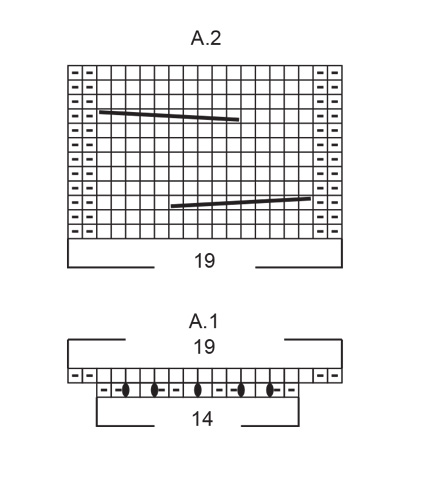 |
||||||||||||||||
 |
||||||||||||||||
Have you finished this pattern?Tag your pictures with #dropspattern #snowfallvest or submit them to the #dropsfan gallery. Do you need help with this pattern?You'll find 21 tutorial videos, a Comments/Questions area and more by visiting the pattern on garnstudio.com. © 1982-2025 DROPS Design A/S. We reserve all rights. This document, including all its sub-sections, has copyrights. Read more about what you can do with our patterns at the bottom of each pattern on our site. |
||||||||||||||||







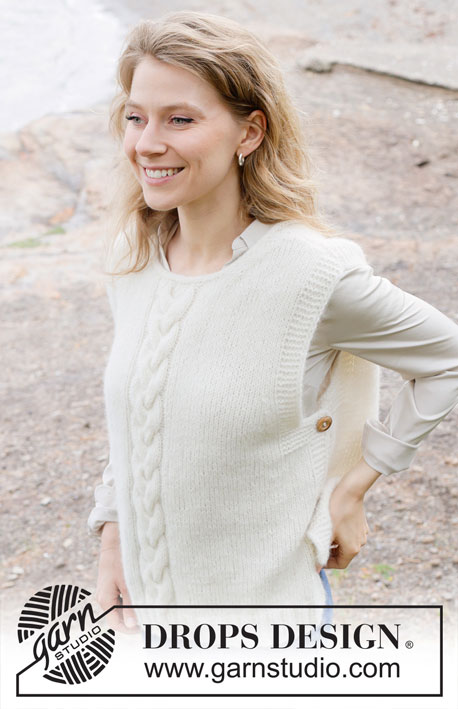
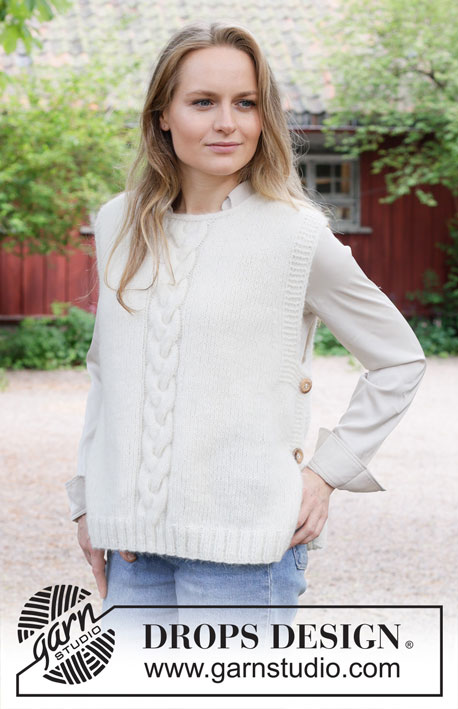
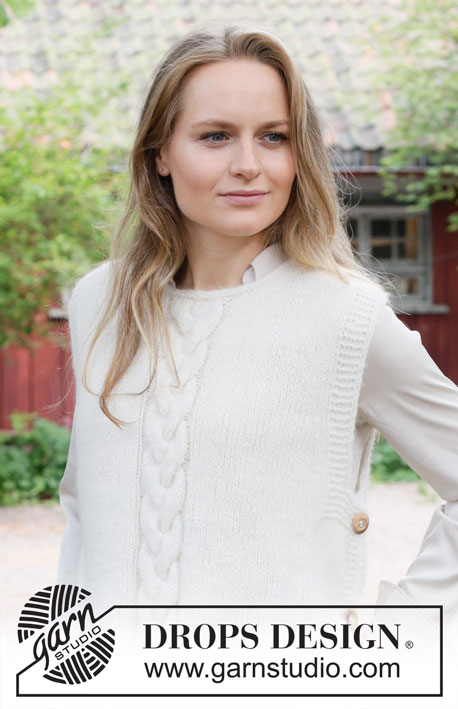
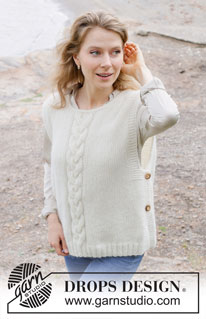
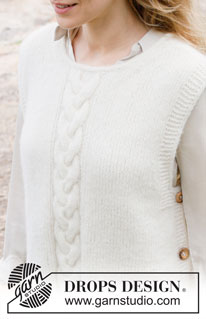
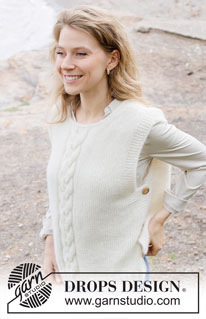
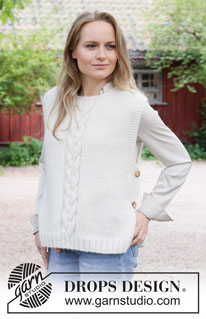

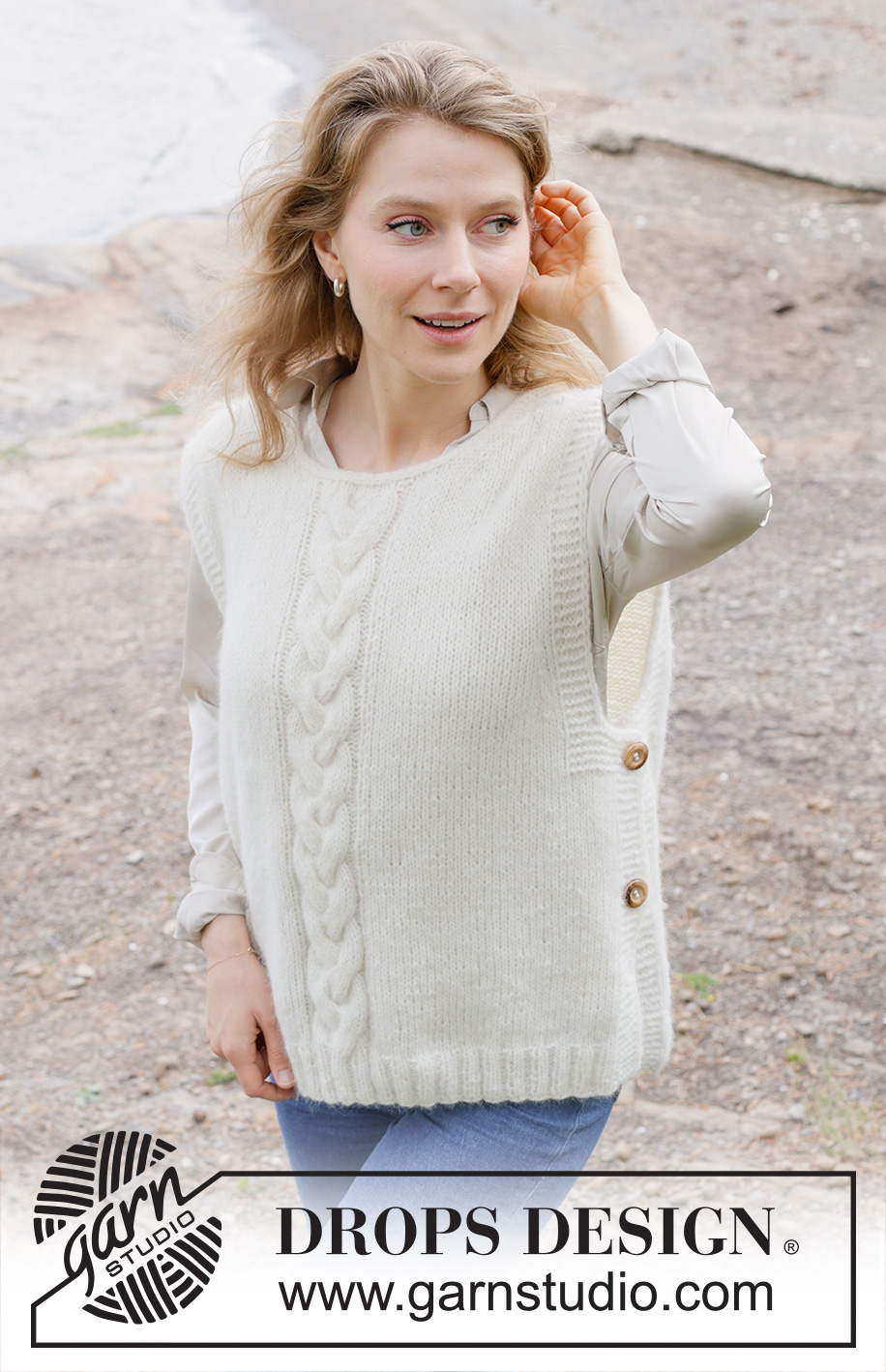

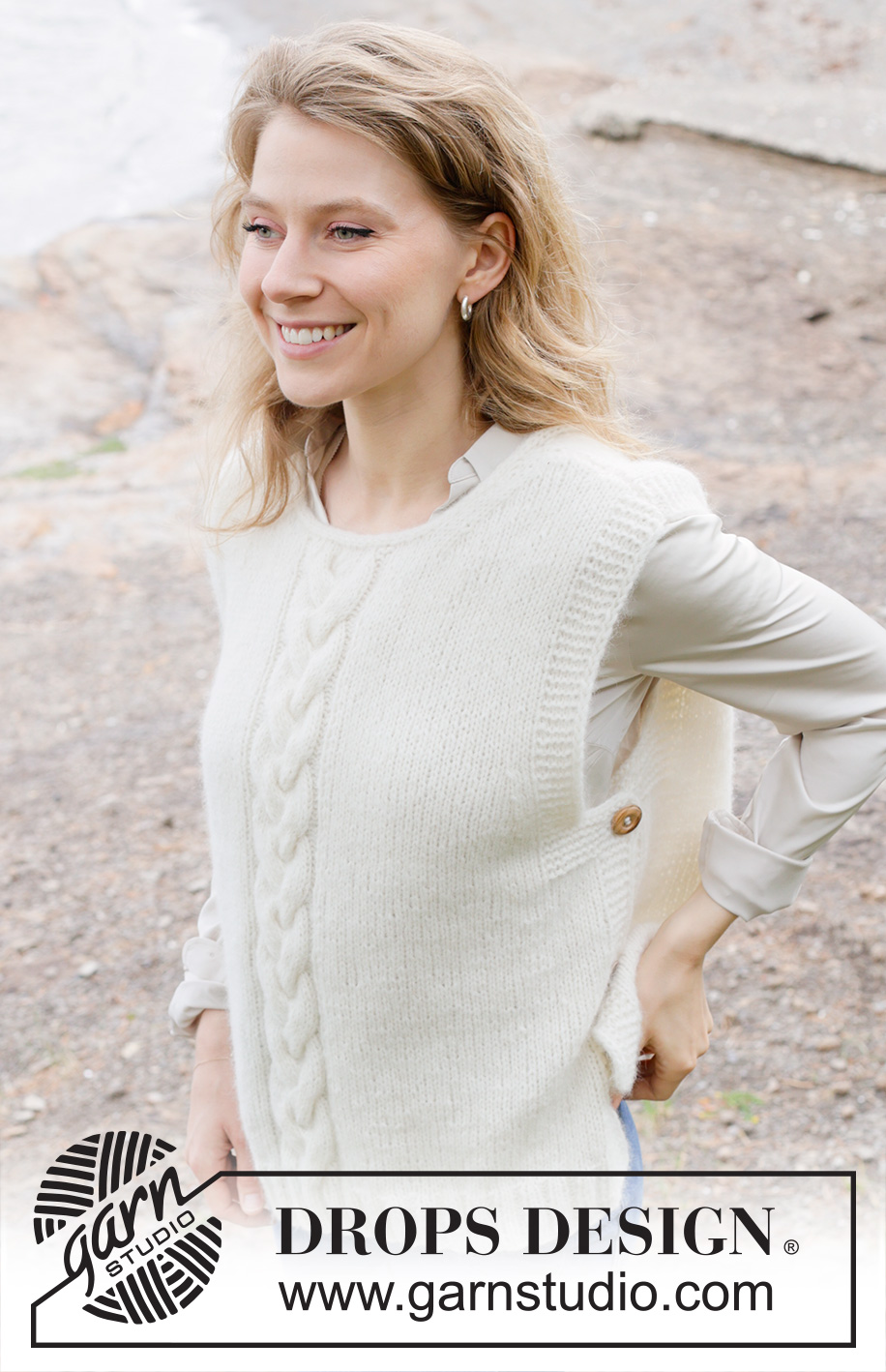
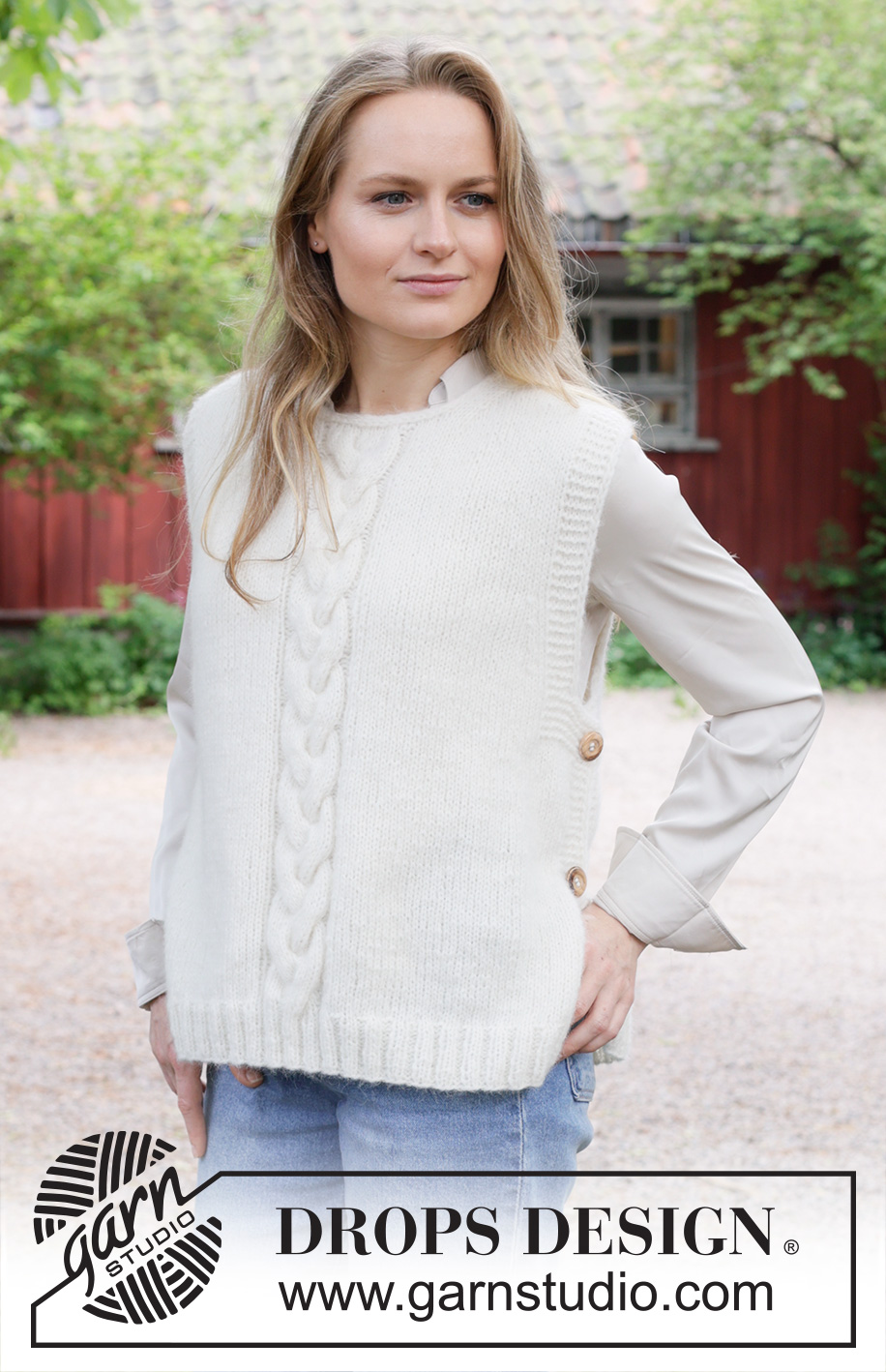

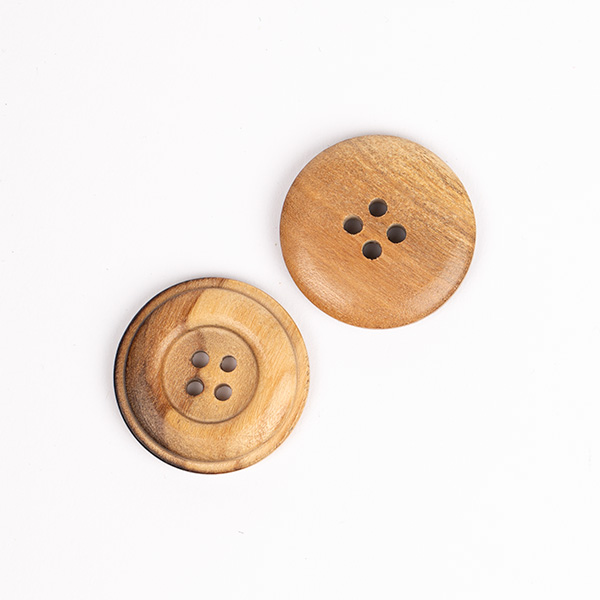

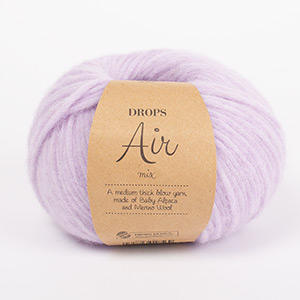
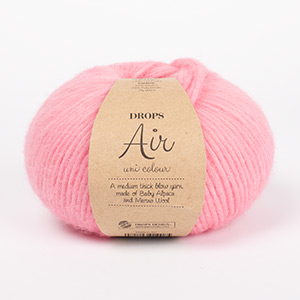


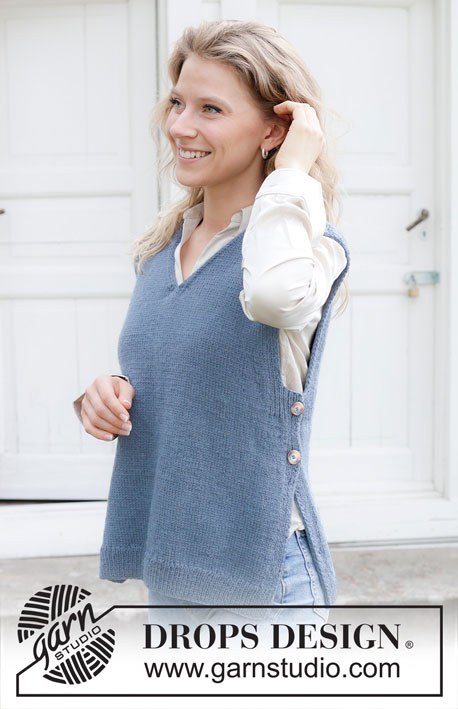
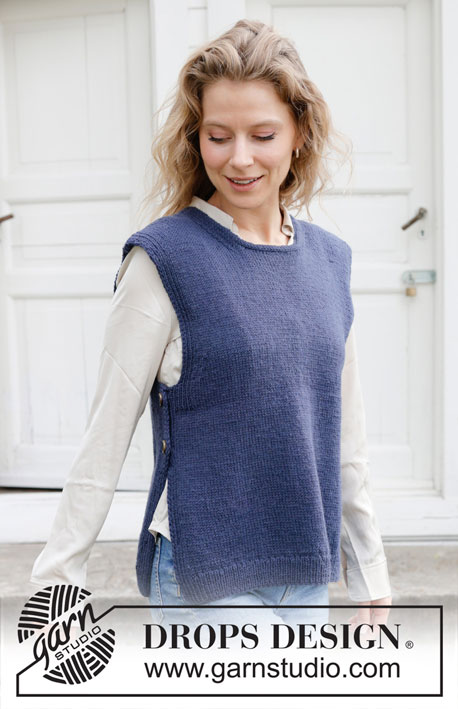







































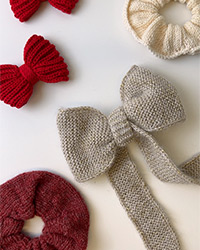
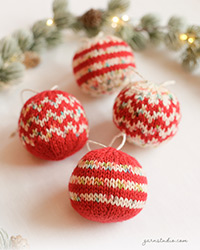
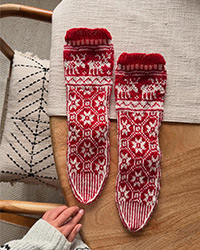

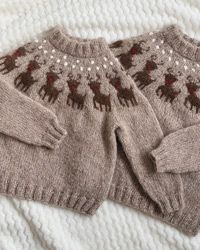

Post a comment to pattern DROPS 252-31
We would love to hear what you have to say about this pattern!
If you want to leave a question, please make sure you select the correct category in the form below, to speed up the answering process. Required fields are marked *.